acoustic analysis
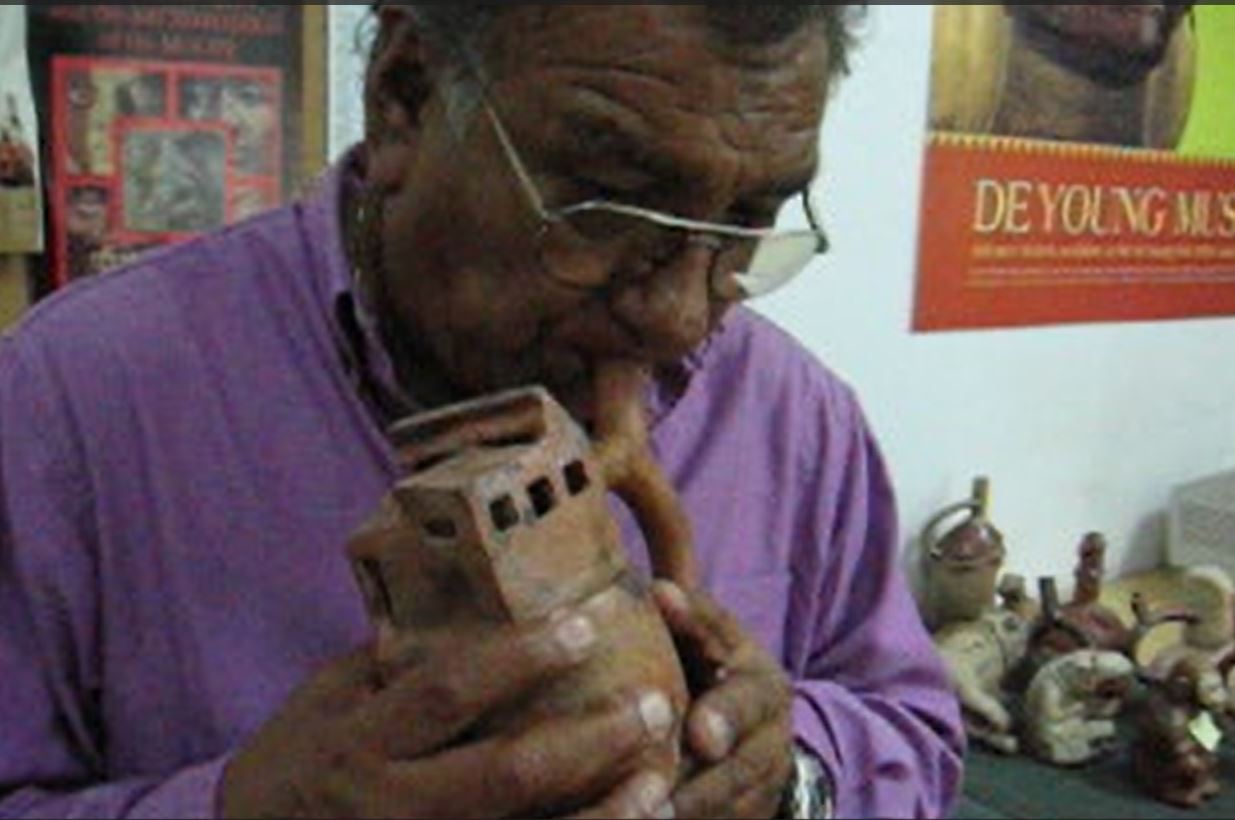
Acoustic analysis of north coast Peruvian vessels
On a Saturday afternoon in late October of 2006, while I was working with Carlos Velazquez in the collections of the Museo Arqueologico Rafael Larco Herrera in Lima, we made an important discovery.
Carlos and I had gone to gather architectural vessels from the museum’s visible storage area. As we identified the vessels we wanted to study, Carlos removed the glass pane from the wooden cabinet and carefully transferred the selected objects from the shelf into a cardboard box.
Back in the lab, I began to measure, weigh, and sketch each object, but something about one of vessels struck me as odd. I passed it to Carlos, who, after looking at it intently for a moment laughed heartily, exclaiming iSe silba! iSe silba! (It whistles! It whistles!). Carlos proceeded to demonstrate by blowing into the vessel’s spout.
It turned out that this architectural vessel–and several others in the Larco collection–contained whistling mechanisms hidden inside their architectural superstructure.
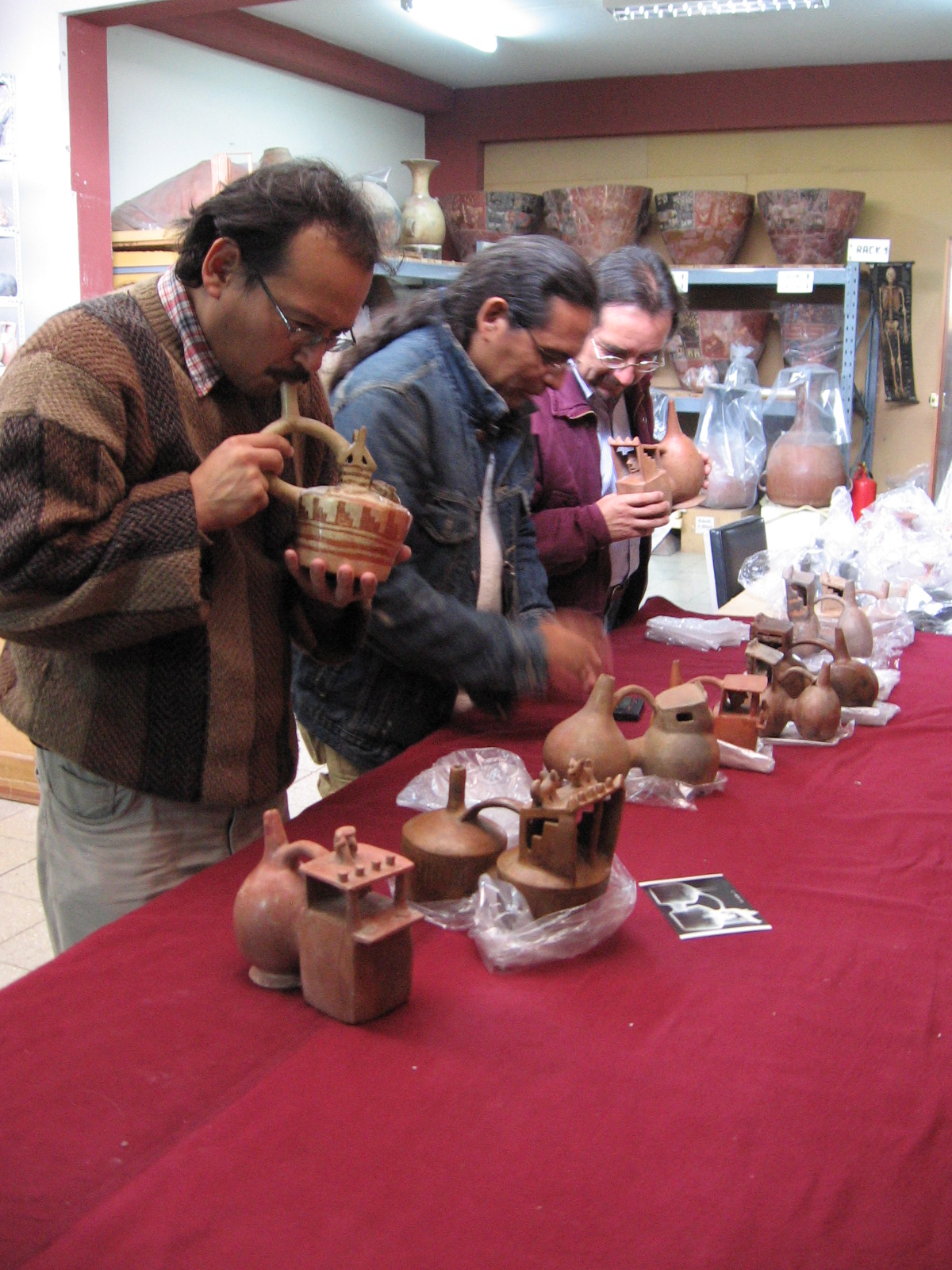
The next week, at the Museo Nacional de Antropologia, Arqueologia, e Historia, also in Lima, I decided to revisit objects I’d already studied, keeping an eye out for anything that looked like a whistling vessel.
I was fortunate to coincide with a project underway at the museum, Proyecto Waylla Kepa, and its investigative team of musicians, ethnomusicologists, and musicologists: Carlos Mansilla, Dimitri Manga, and Milano Trejo (pictured from left to right).
Waylla Kepa had been studying the acoustic properties of Nasca ceramic panpipes and had made some incredible discoveries. They reminded me that when analyzing the acoustic properties of ceramic whistling vessels made two thousand years ago by groups living on Peru’s north coast–whose musical systems we know little about–it is important to detach ourselves from the twelve-tone scale common to modern European and Western music (typically performed by instruments such as the cello, piano, or flute).
We have no information about what type of scale, if any, was used by the Moche or their north (and south) coastal neighbors. Nonetheless, the very tones are preserved in the whistling vessels (and ceramic panpipes) held today in collections like the Museo Larco and the Museo Nacional in Lima.
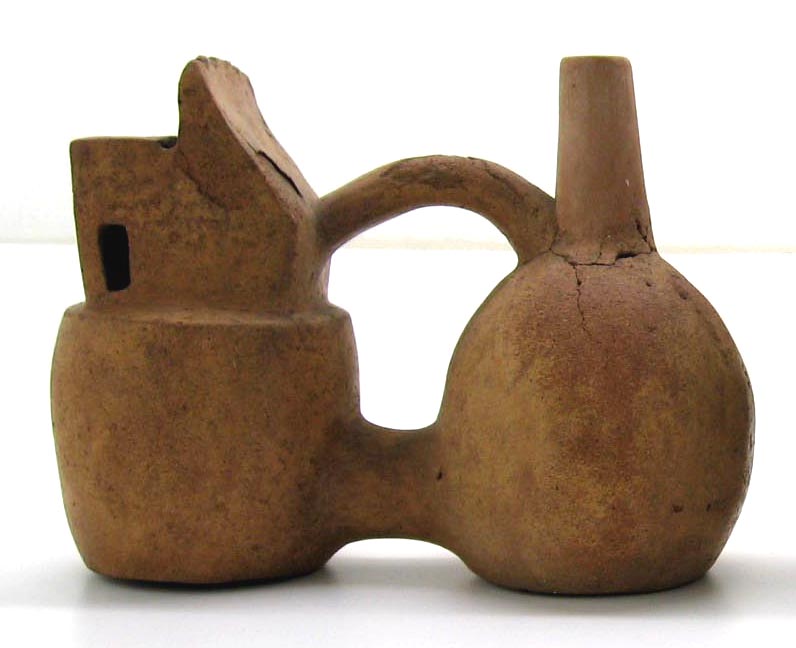
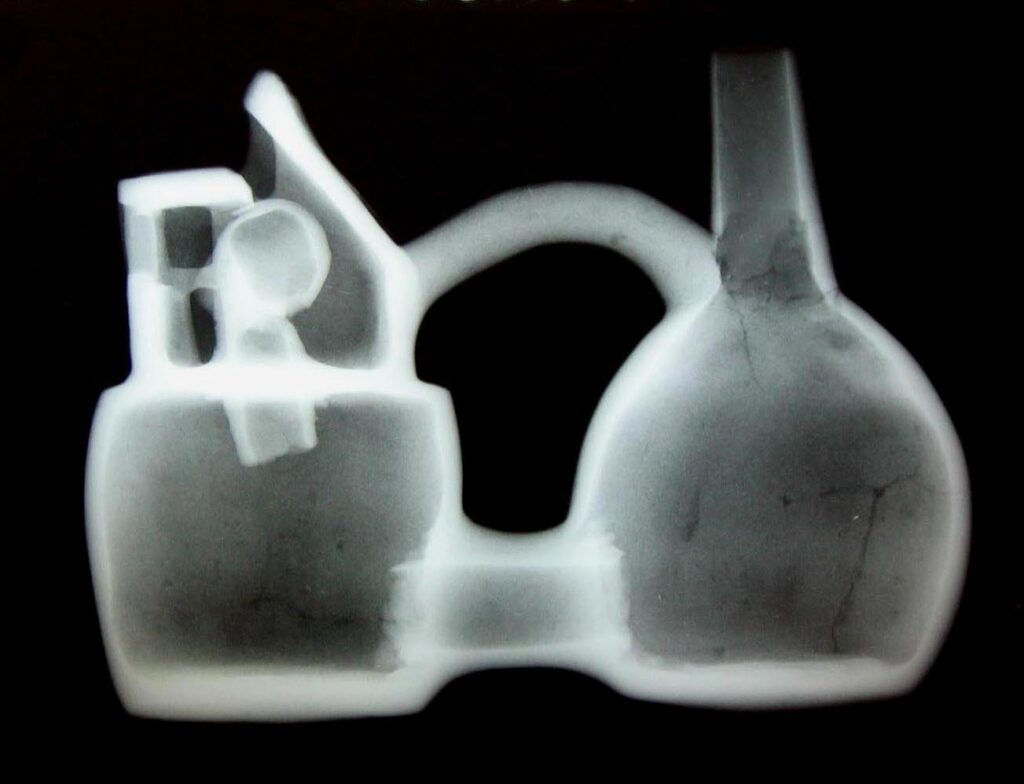
With members of Proyecto Waylla Kepa, architectural whistling vessels were played, and the sound produced was recorded and later analyzed (assigned
in hertz and referenced to common practice musical notes with deviations given in cents). The tones or notes extracted from the vessels were analyzed in terms of timbre (subjectively described as either “dark,” low frequency or “bright,” high frequency) and quantified using cents (a logarithmic unit of measure used to describe musical intervals) and hertz (cycles per second). For example, the 1090.3 Hz fundamental tone created by the Viru vessel seen at left can be compared to the frequency of Db6 (-19 cents) on the piano in the common twelve-tone, equal-tempered tuning system used in contemporary popular and Western and European music.
Vessel depicted at left is Ministerio de Cultura/MNAAP C-65369


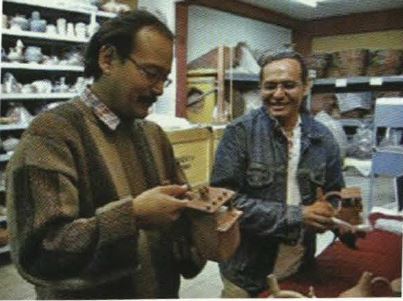
As this investigation revealed, a significant number of architectural pots contain whistling mechanisms. This suggests that sound was important to ancient Andean peoples. Furthermore, it appears that the type of sound was not incidental or arbitrary but quite specific and precise.
At left are two vessels that share external similarities.
Vessels depicted here are Ministerio de Cultura/MNAAHP C-64846 (left) and Ministerio de Cultura/MNAAP C-65369 (right).

Two Viru vessels housed at the MNAAHP in Lima exhibit great external as well as internal similarities. Given these striking external as well as internal
similarities, we wondered if these two vessels might also produce similar tones and timbres? In an effort to test this, Carlos Mansilla and Dimitri Manga played the vessels first independently then simultaneously. Not only did the vessels produce almost identical fundamental frequencies (translated to common practice pitches within a semitone), but a third tone was audible when both whistling vessels were played together.
Vessels depicted are Ministerio de Cultura/MNAAHP C-65326 (left) and Ministerio de Cultura/MNAAHP C-54417 (right)
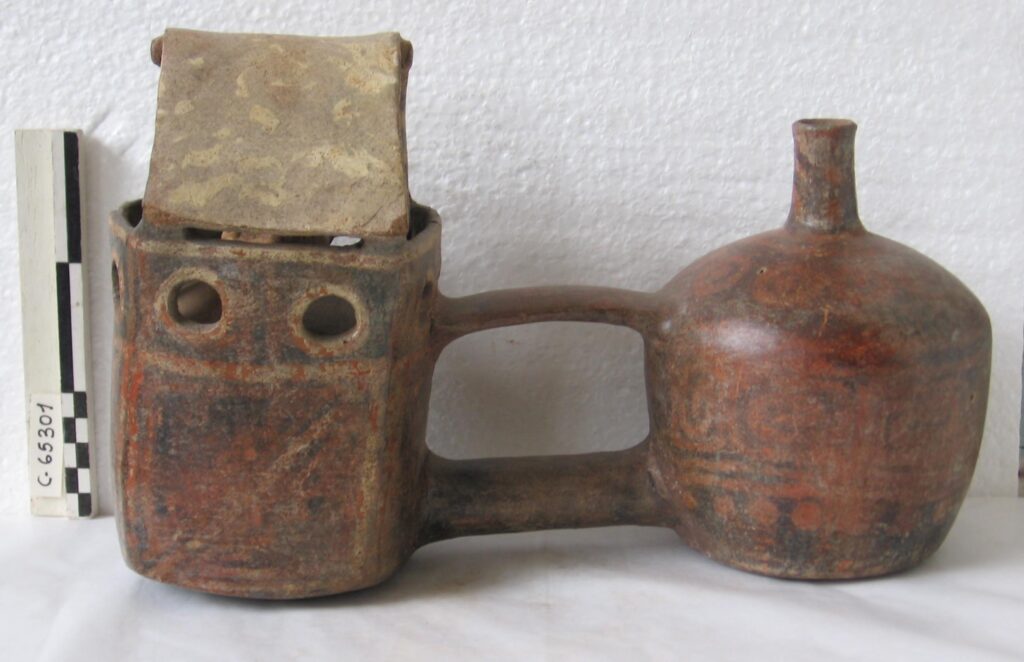
Vessel depicted is Ministerio de Cultura/MNAAHP C-65301

Also in the Museo Nacional collection was this double chambered whistling vessel of a parrot. Because the front of the vessel is broken, we are able to see that–housed within the parrot’s head–are not one or two but THREE whistling mechanisms. As Milano demonstrates, this vessel produces an unusually complex set of tonalities.
Vessel depicted is Ministerio de Cultura/MNAAHP C-33176
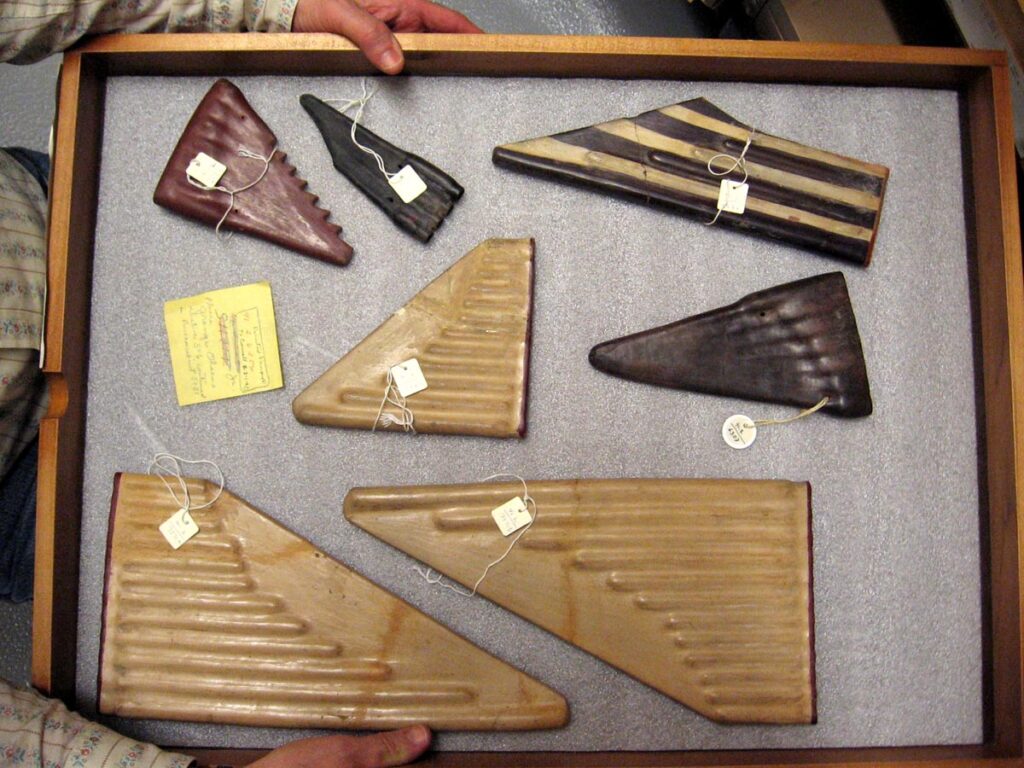
Nasca and Paracas ceramic panpipes (where Paracas panpipes are assumed to be the unpainted and more organic shaped panpipes).
One of the discoveries made by Waylla Kepa is that Nasca panpipes were created in sets of 6, with 2 large panpipes and 4 small ones. Image at left depicts part of one such “set.”
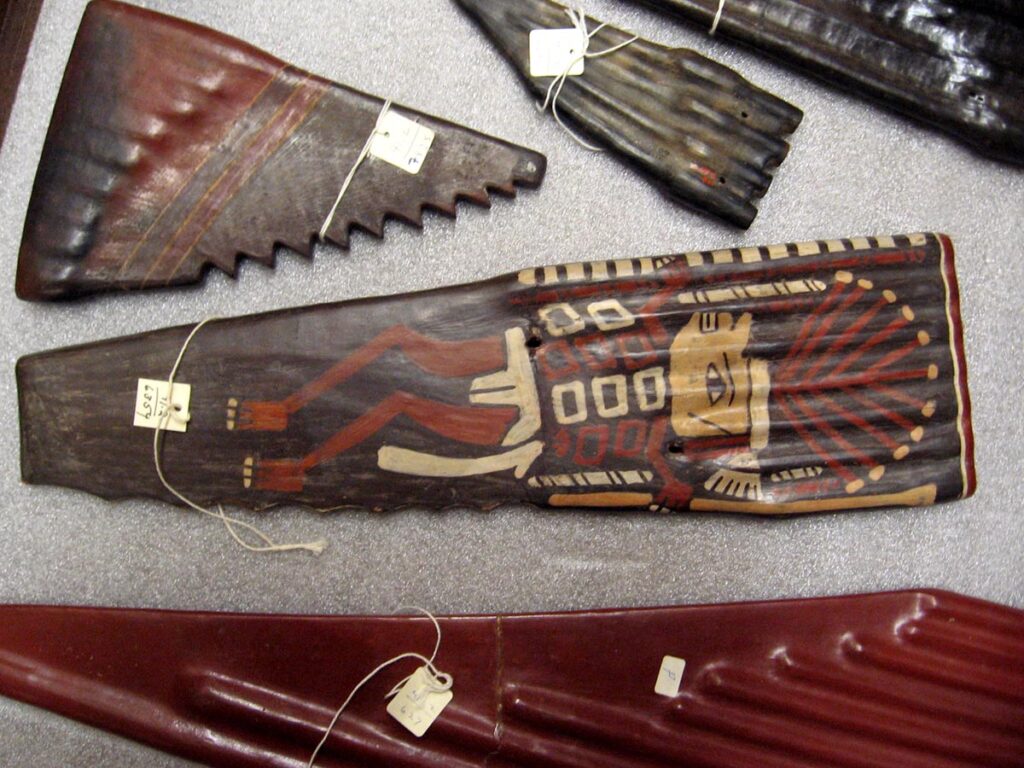
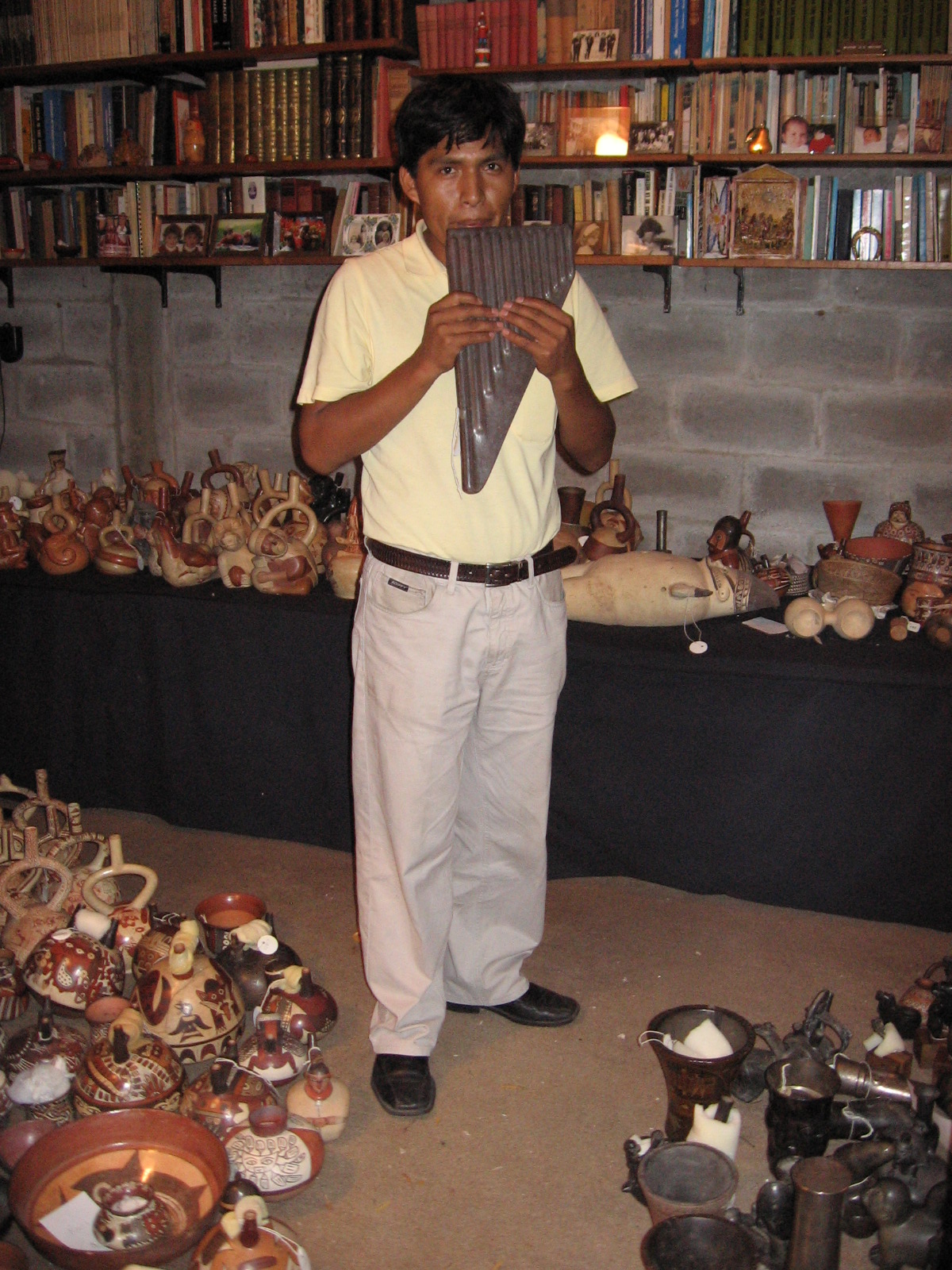
Pictured here are pieces comprising the collection of Peruvian architect, Eugenio Nicolini.

